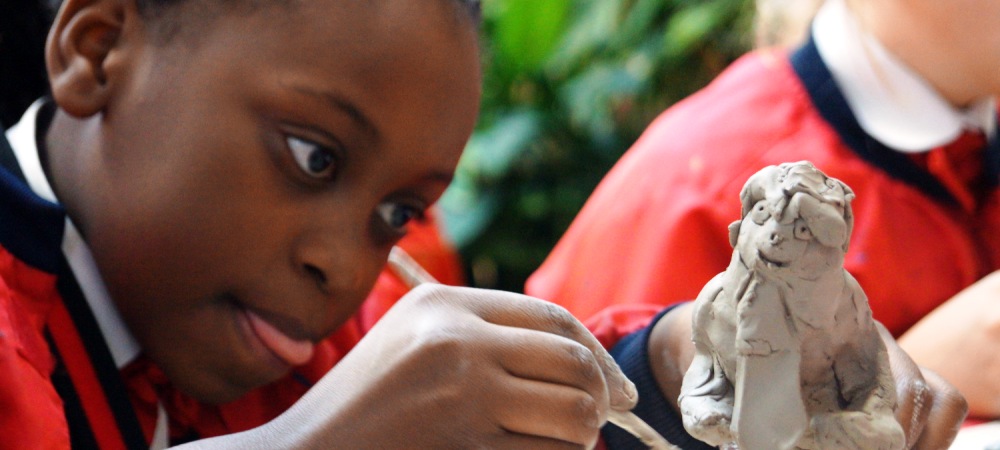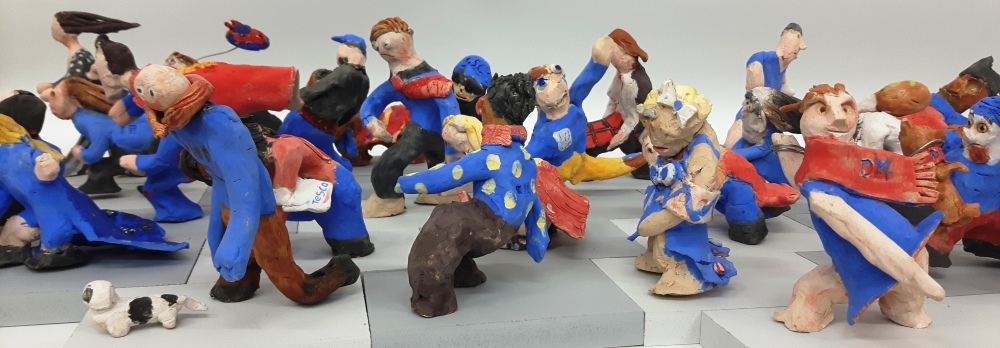
“All children are artists. The problem is how to remain an artist once he grows up.”
Pablo Picasso
I completely relate to the sentiment behind this quote (though artists can be female too Mr Picasso – tut, tut!).
There is a major problem with today’s current educational system – its strong bias to the more traditionally academic subjects is crippling the confidence of our next generation of artists. There’s right and then there’s wrong and, in the modern-day classroom, wrong is definitely bad.
To be a good artist you need time to explore, to create without fear, to push boundaries, to MAKE MISTAKES! I know from making my own art, my biggest successes are directly born from my ‘wrongs’. If a child has a fear of being labeled wrong then they won’t produce anything innovative or breathtaking; they’ll just play it safe which is unlikely to lead to anything innovative or groundbreaking. Art is so subjective too – no one has the right to label anyone’s artwork wrong.
Our current curriculum may work for some children – for the future lawyers, accountants, and bankers of the world – but for those born with an eye for creativity, it can leave their innate talents being undervalued, underappreciated, or, worst of all, undiscovered. A child’s entire perception of their self-worth could be completely undermined and a whole generation of artists may slip through the cracks, resigned to pursuing careers that never make them want to get up in the morning.
Creating art is also so good for our mental health too! This is more essential than ever as we get to grips with the Covid-19 pandemic. It’s been a terrible year for us all – we’ve all been left feeling uncertain of the future, isolated and anxious. Creating can provide an escape from all of that, its been well documented that just a few minutes of mindfully creating a day can be so beneficial for our overall wellbeing!
Our lives are also dominated by screen time which shortens our attention span and leaves children to grow up being spoon-fed the imaginations of others, never using their own.
To summarise – we owe it to future generations to allow children to explore their creativity. The current curriculum doesn’t always offer this and if you still don’t believe then please watch the most viewed TED talk of all time by Ken Robinson.

What I Do:
- I lead school-based creative workshops specialising in clay, wire sculpture, and drawing.
- They can be bespoke projects designed to match your school’s requirements or tried and tested workshops.
Why me?
- I am a professional male artist making a living from my art and through teaching.
- I have nearly 10 years experience of teaching people of all ages including children.
- I have worked with over 20 schools and youth groups.
- I am fun, encouraging, and engaging.
Zoom-based drawing sessions
- During these times of lockdown, I am not available to work in schools until I have been vaccinated. Instead I am offering zoom-based drawing sessions.
- They are great fun, affordable and really affirm that drawing is a pastime that is available to us all, at any time.
Why clay and sculpting is so important?
- There tends to be a 2D bias in schools so sculpture is a less well-known medium to school children.
- Very few schools have kilns anymore so children are not exposed to the joys of clay, in fact some children may never even get to touch clay during their early, informative years.
Why explore clay or sculpture?
- Both clay and sculpture is incredibly tactile and engaging. The liveliest of classrooms can be silenced by the captivating powers of clay!
- Sculpting can change people’s lives for the better.
Past Projects:
I have run a large number of projects at different levels of scale. Some pictures are included below:

